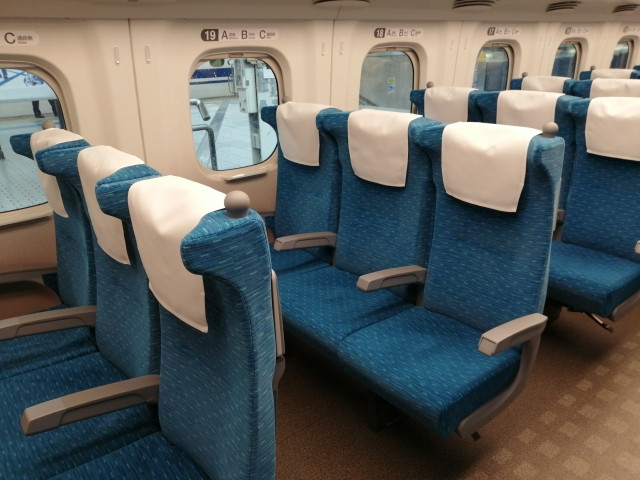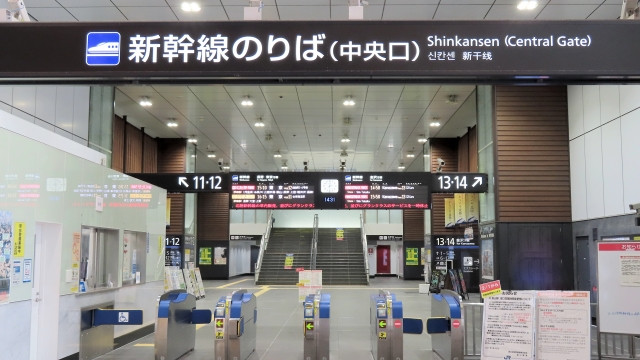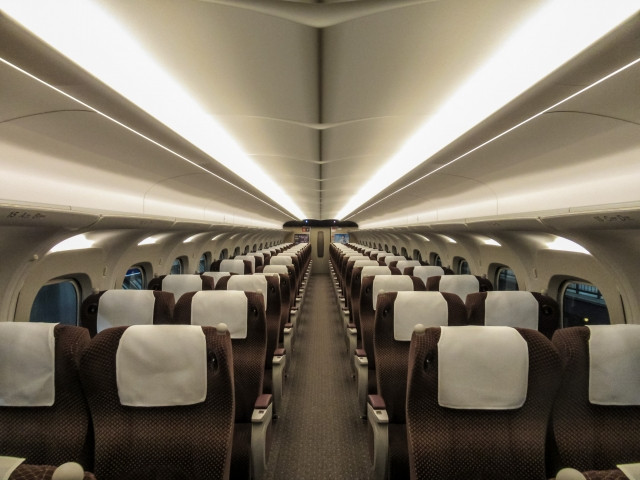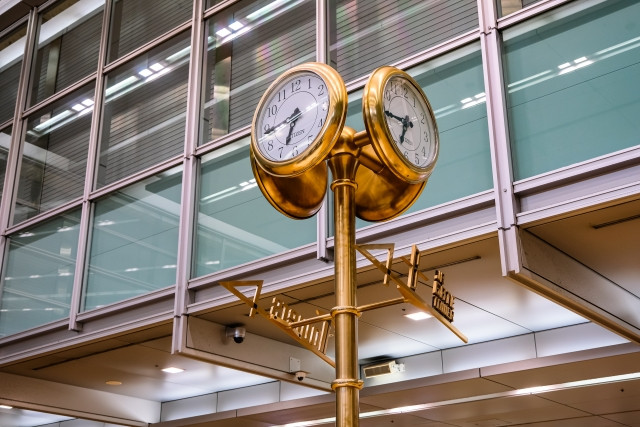Japan is the pioneer of high-speed railway since the debut of its bullet train, the Shinkansen. The Tokaido Shinkansen that began operation in 1964 was the first of its kind bringing a whole new method to travel. Presently, it is still the most convenient method to travel across East Japan.
Table of Contents
- The World's First High-Speed Rail Line
- Types of Services
- Tokaido Shinkansen Ticket and Seating
- Tokaido Shinkansen Destinations
- Summary
The World's First High-Speed Rail Line
Japan took the world by storm when it unveiled the Shinkansen in 1964. The world was in awe at the technology, innovation, and engineering put into the world’s first high-speed rail line. Though it may have been surpassed by later generation trains, it has made its mark in history and will always be remembered as the first. Just like we never forget that the light bulb was invented by Thomas Edison, the Tokaido Shinkansen will always have a place in our heart.
History of the Tokaido Shinkansen

The Tokaido or the Eastern Sea road used to be one of the five major trade routes during the Edo Period. It ran from Edo (former Tokyo) to Kyoto and Osaka.
Centuries later, the Tokaido Shinkansen was unveiled for the first time in 1964 and ran on the New Tokaido Line which was based upon the historic Tokaido route. Why is it called the New Tokaido Line? Because it was not the first railway line built covering this route. The first line based on the ancient Tokaido route was the 1895 Tokaido Main Line. The New Tokaido Line and its Shinkansen was unveiled at the advent of the 1964 Summer Olympics in Japan where it received much praise from around the world.
It lived up to expectations, and the whole world was awed at its speed at 210km per hour, the fastest at that time. It became the icon and benchmark for trains. It was nicknamed the “bullet train” for its tremendous speed and nose design that resembled a bullet.
In present day Japan, the Tokaido Shinkansen’s maximum speed can reach 285km per hour. That’s 35.5% faster since 1964. It might not be the fastest train anymore but for over 50 years, it has reliably transported passengers fast, timely, and most importantly safely.
※ Central Japan Railway Company, “About the Shinkansen” ※ Encyclopædia Britannica, Inc., "Shinkansen" ※ Encyclopædia Britannica, Inc., "Tōkaidō"
For more about Shinkansen, read: Japan Bullet Train: An Adventure in just a snap!
Writer's Pick
Types of Services

The Tokaido Shinkansen offers 3 train services, namely the: Nozomi, Hikari, and Kodama. All 3 trains run along the same line but stop at different stations, and run at different speeds. Which train to take depends on your destination, schedule, and urgency.
Nozomi
Gotta go fast? Then Nozomi is for you. Nozomi is the fastest among the 3 train services but with a catch: it only stops at 6 major stations on the New Tokaido Line, namely Tokyo, Shinagawa, Shin-Yokohama, Nagoya, Kyoto, and Shin-Osaka. It is recommended for passengers that want to get to these places in the shortest time possible.
Keep in mind when scheduling that the Nozomi is not covered under the Japan Rail Pass (JR Pass).
Hikari
Hikari is the fastest train you can take if you have a JR Pass. Aside from the 6 major stations that Nozomi stops at, Hikari also stops at some minor stations like Odawara, Atami, Mishima, Shizuoka, Hamamatsu, and Maibara. Hikari is recommended for you if you are not really in a rush for time as you can get a reserved seat at a cheaper price than the Nozomi.
Kodama
Kodama is the slowest of the 3 train services because it stops at all 17 stations on the New Tokaido Line. It is recommended for visitors going to places not reachable by the other 2 trains, or those that wish to travel at a leisurely place. Kodama is covered by the JR Pass so no limits to visiting each place at least once, if you have the time.
For more reading about these services, check out the link below.
-
Central Japan Railway Company, "About Tokaido Sanyo Shinkansen"
Tokaido Shinkansen Ticket and Seating

The Tokaido Shinkansen has its own ticket and seating system to accommodate its passengers according to their preferences.
Ordinary Car and Green Car
There are 2 types of seating options on the Shinkansen; ordinary cars and green cars (business class). Green cars are reserved seats only, whereas ordinary cars come in both reserved and non-reserved seats. Green car seats are more spacious, comfortable, and less crowded which means peace and quiet.
Reserved seats are self-explanatory: you get a fixed seat in a designated car. Your seat information will be printed on your ticket. Non-reserved ordinary cars run on a first come first serve basis. Note that carriers of oversized baggage must purchase a reserved seat and not be allowed on the non-reserved ordinary car. If you get caught, you will have to pay an additional fee so save yourself the trouble and get reserved.
Ticket System

The ticket system for Shinkansen trains can be a little complicated. First things first, know that the Shinkansen is considered a Limited Express train. Most Shinkansens need to be boarded after passing through a conventional ticket gate. For example,
Tickets
To use the Shinkansen, you need 2 tickets; a basic fare ticket, and a limited express ticket. Travelers of green cars have to pay an additional green car fee.

Boarding with Paper Tickets
Just insert both tickets together into the automatic ticket gate. Don’t forget to take them when they come out on the other side.
Boarding with IC Card
If you purchased your tickets through the official shinkansen ticket service mobile app with your IC card, you can just tap your IC card on the automatic ticket gate’s card reader. A ticket will appear on the other side so remember to take it.
※ JR Central, “Boarding Guide” ※ JR Central, “How to read the information on the tickets”
Online Ticket Reservation
For purchasing tickets, you can access the Tokaido Sanyo Shinkansen Online Reservation Service Official Website. You can purchase your tickets one month before your departure for up to 6 people. You can also easily adjust your ticket reservation according to your schedule easily and free of charge. You can also choose your preferred boarding method using either QR tickets, Pick-up tickets, or IC Cards.
Japan Rail Pass
As previously mentioned, the Japan Rail Pass covers usage of Hikari and Kodama trains along the Tokaido Shinkansen route. If you’re interested in getting the Japan Rail Pass, check out our dedicated article: An essential ticket for traveling: The Japan Rail Pass
Tokaido Shinkansen Destinations

The Tokaido Shinkansen gives you access to major cities in Kanto, Tokai, and Kansai Regions. Here are famous tourist destinations that you can easily access using the Tokaido Shinkansen:
Tokyo
The starting point, or ending point, of the New Tokaido Line. There are many things to do around the station, like:
• Shopping at Gransta Underground Mall, Yaesu Chikagai, Daimaru Tokyo, and First Avenue Tokyo Station
• Visiting the Imperial Palace
Learn more about Tokyo Station’s history at Century-Old Tokyo Station: The Gateway to Your Destinations.
Shin-Yokohama

Tokyo - Shinagawa - Shin-Yokohama
The time you'll take to complete this route should be about 17 minutes aboard the Nozomi, 18 minutes aboard the Hikari, and within 30 minutes aboard the Kodama. Within and nearby this station, you can visit these attractions:
• Shin-Yokohama Ramen Museum
• International Stadium Yokohama
• Nissan Water Park
• KOSE Shin-Yokohama Skate Center
• Kiyoken Yokohama Factory
For more information about Yokohama: The Coastal City of Japan, Yokohama
Nagoya

Tokyo - Shinagawa - Shin-Yokohama - Shizuoka - Nagoya
The time you'll take to complete this route should be about 1 hour and 40 minutes aboard the Nozomi, 1 hour and 50 minutes aboard the Hikari, and 3 hours aboard the Kodama. Within and nearby this station, you can visit these attractions:
• Nagoya Castle
• Tokugawa Art Museum
• Higashiyama Zoo and Botanical Gardens
• Koshoji Temple
• Atsuta Jingu Shrine
Kyoto
Tokyo - Shinagawa - Shin-Yokohama - Nagoya - Kyoto
The time you'll take to complete this route should be about 2 hours and 10 minutes aboard the Nozomi, 2 hours and 40 minutes aboard the Hikari, and 4 hours aboard the Kodama. Within and nearby this station, you can visit these attractions:
• Kyoto Railway Museum
• Higashi & Nishi Honganji Temple
• Ryukoku Museum
• Shosei-en Garden
Here’s an itinerary to explore the best of Kyoto:
Taking a trip down the Old Capital: A 3-day Kyoto Itinerary
For more ideas of things to do in Kyoto, check out these articles:
Shin-Osaka
Tokyo - Shinagawa - Shin-Yokohama - Nagoya - Kyoto - Shin-Osaka
The time you'll take to complete this route should be about 2 hours and 30 minutes aboard the Nozomi, 3 hours aboard the Hikari, and more than 4 hours aboard the Kodama. Within and nearby this station, you can visit these attractions:
• Shinsekai
• Umeda Sky Building
• Abeno Harukas
• Nipponbashi
Here’s an itinerary to explore the best of Osaka:
3-day Osaka Itinerary - Maximize Your Osaka Experience
Summary

The Tokaido Shinkansen continues to function as an important transportation in Japan ever since its unveiling in 1964. It is a traveler's best friend, allowing everyone to visit famous cities like Tokyo, Yokohama, Nagoya, Kyoto, and Osaka within a short amount of time. Traversing across Japan has become a breeze with the Shinkansen, so no more waiting; it’s time to grab a ride.








.jpg)
























